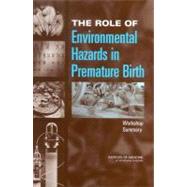
| SUMMARY | 1 | (5) | |||
|
1 | (5) | |||
| CHARGE TO PARTICIPANTS AND WORKSHOP SCOPE | 6 | (3) | |||
| PROBLEM STATEMENT | 9 | (4) | |||
| 1 PRETERM BIRTH AND ITS CONSEQUENCES | 13 | (14) | |||
|
13 | (1) | |||
|
14 | (1) | |||
|
15 | (2) | |||
|
17 | (3) | |||
|
20 | (1) | |||
|
21 | (5) | |||
|
26 | (1) | |||
| 2 LABOR AND DELIVERY | 27 | (15) | |||
|
28 | (14) | |||
| 3 PRETERM BIRTH-BRIEF SUMMARY OF BIOLOGICAL PATHWAYS | 42 | (4) | |||
|
42 | (4) | |||
| 4 PRETERM BIRTH-GENE-ENVIRONMENT INTERACTIONS | 46 | (16) | |||
|
47 | (4) | |||
|
51 | (1) | |||
|
52 | (2) | |||
|
54 | (2) | |||
|
56 | (6) | |||
| 5 PRETERM BIRTH-SOCIAL IMPLICATIONS | 62 | (6) | |||
|
63 | (3) | |||
|
66 | (1) | |||
|
66 | (1) | |||
|
67 | (1) | |||
| 6 FUTURE DIRECTIONS | 68 | (9) | |||
|
68 | (1) | |||
|
69 | (8) | |||
| ABSTRACTS | 77 | (30) | |||
|
77 | (1) | |||
|
78 | (3) | |||
|
81 | (2) | |||
|
83 | (1) | |||
|
84 | (2) | |||
|
86 | (1) | |||
|
87 | (2) | |||
|
89 | (1) | |||
|
90 | (2) | |||
|
92 | (1) | |||
|
93 | (2) | |||
|
95 | (3) | |||
|
98 | (1) | |||
|
99 | (2) | |||
|
101 | (1) | |||
|
102 | (2) | |||
|
104 | (1) | |||
|
105 | (2) | |||
| REFERENCES | 107 | (6) | |||
| APPENDIXES | |||||
|
113 | (7) | |||
|
120 | (3) | |||
|
123 |
The New copy of this book will include any supplemental materials advertised. Please check the title of the book to determine if it should include any access cards, study guides, lab manuals, CDs, etc.
The Used, Rental and eBook copies of this book are not guaranteed to include any supplemental materials. Typically, only the book itself is included. This is true even if the title states it includes any access cards, study guides, lab manuals, CDs, etc.